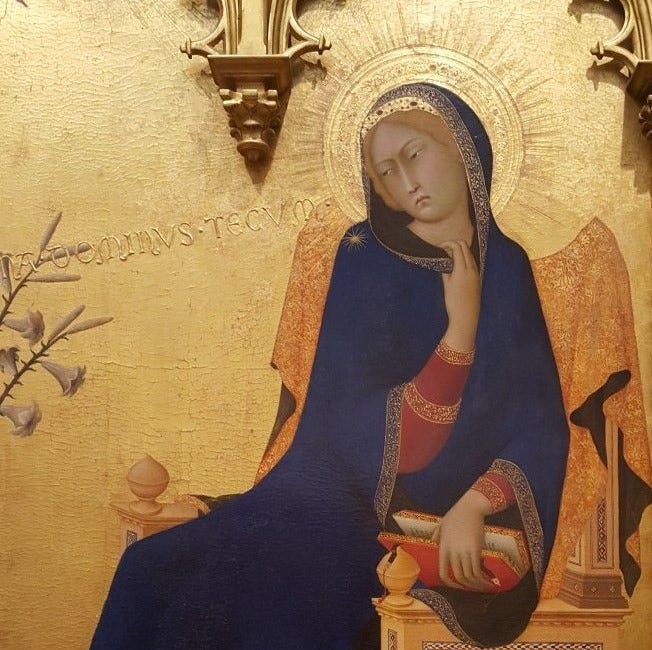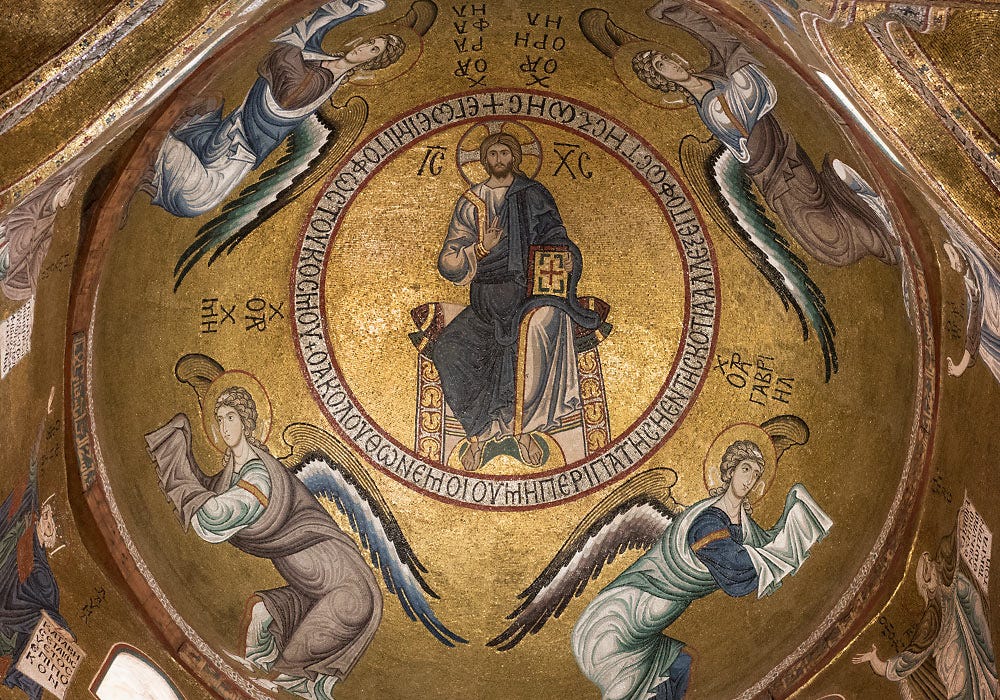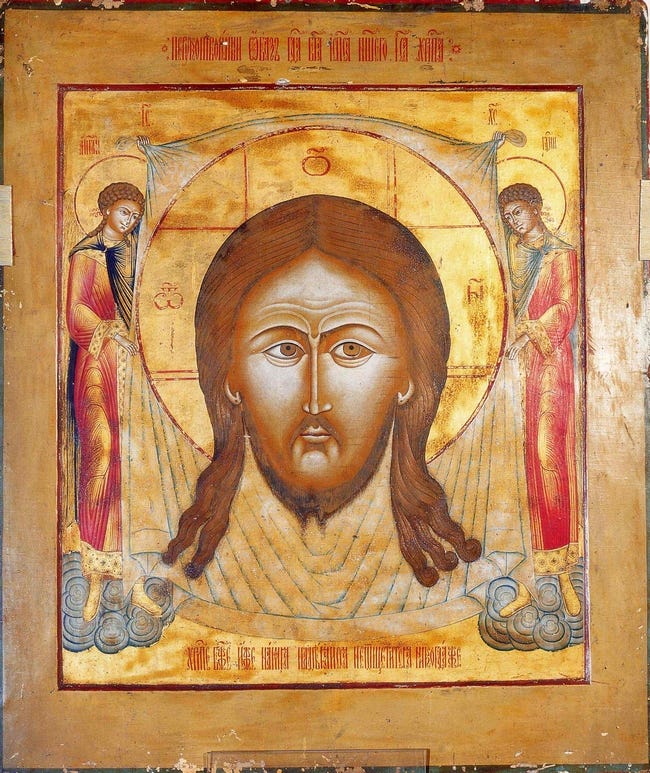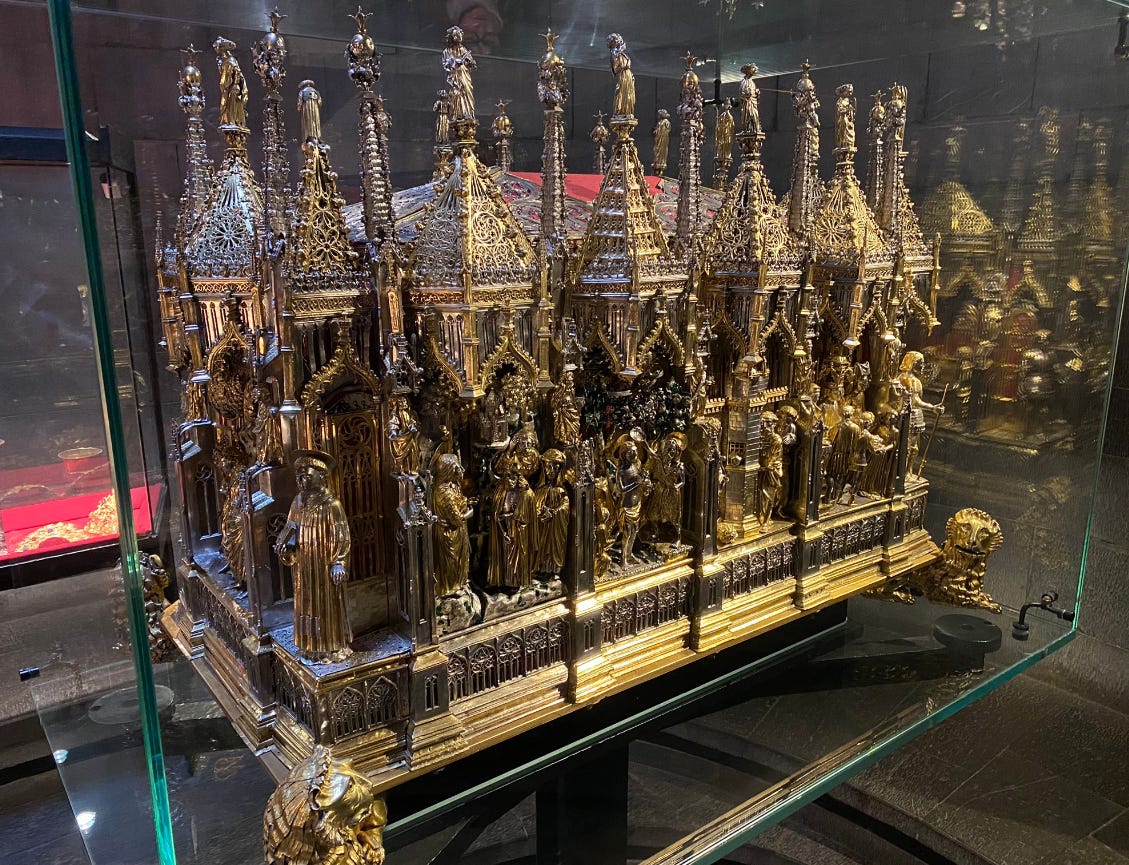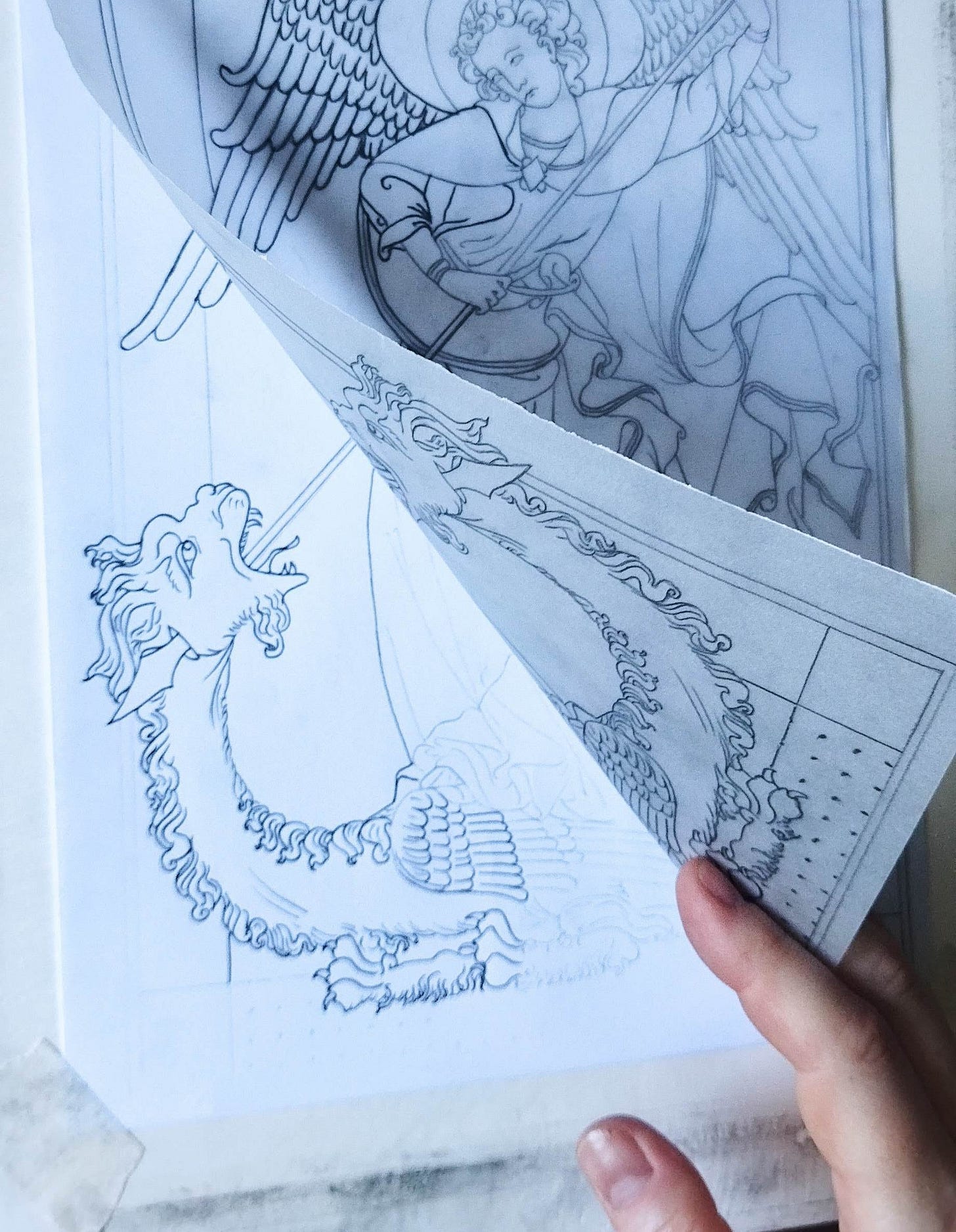Friday Goodie-Bag for May 24: quiz answers. And MOAR quizzes! Name that prototype
Plus a little gift for paid subscribers
It seems like lots of people enjoyed the multiple choice questions. So maybe we can keep doing them.
These quizzes aren’t really quizzes, by the way. They’re excuses for me to post my favourite eye-candy, and encouragements for googling. If it sparks an interest in a particular thing you’ve never encountered or thought about before, that’s the goal.
Answers from last week’s quiz
Simone Martini

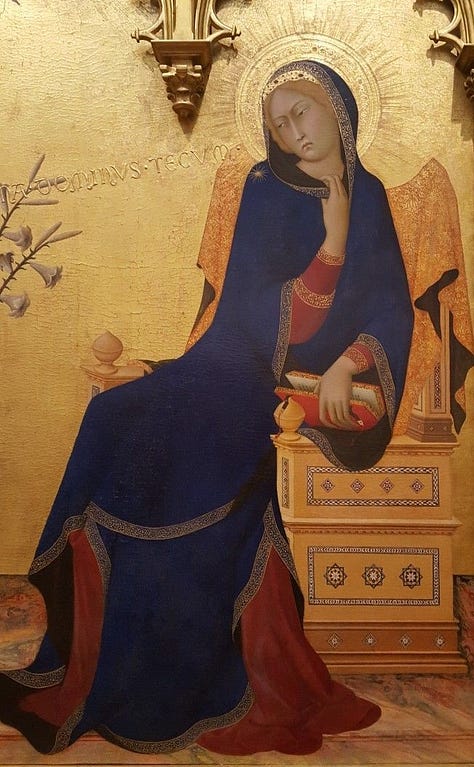

I gave this one away in the next post. This is the great Annunciation triptych by Lippo Memmi and Simone Martini, both masters of the Sienese Trecento, or Italian Gothic school.
"Ave, gratia plena": The greatest masterwork of the Sienese Trecento?
I think it’s time to revisit 14th century Siena. We’re going to be talking - a LOT - soon about the Gothic. I’ve been working on a pretty big multi-part thing. There’s a lot to unpack in this ~400 years of architecture, sculpture, metal and enamel work, manuscript miniatures and panel paintings.
Lorenzo Monaco
The next one, I’ll admit, was something of a trick question. I should have put “none of the above” as the fourth option because it’s not Sienese. Given his dates, the mid-1390s to about 1424, “Trecento” was the best answer, but he started his artistic life as an illuminator in a Camadolese monastery, and then had a studio in Florence.
Lorenzo Monaco's work, depending on who you ask, is either a continuation into the early 14th century of the Gothic/Trecento (and by extension Byzantine) elements - the jewel-colours, flowing linear draperies, symbolic gold backgrounds, delicate idealised iconographic (canonical) faces, elongated figure proportions - or an example of “transitional” painting heading in the cosmically ordained direction of the Centre of All Art for All Time, The Great And Glorious Florentine Renaissance… (if you’re Fanboy Vasari).
Romanesque

So, I guess we should revisit Romanesque painting as a western development of Byzantine, and the differences between them. (Hint: the give-away is always the red dot on the cheeks.)
You can review here:
Romanesque painting: Heaven in the room with you
Part 2 of our series “Know your sacred art terms: Romanesque” A few days ago we talked about one of the “forgotten” forms of Christian sacred art, called Romanesque (~AD 1000 - 1200). We looked at some of the typical features of Romanesque architecture, particularly in the cont…
Pantocrator
You guys absolutely nailed this one to the floor. Well done.
Images of Christ: prototypes
We’ve talked a little about iconographic prototypes, the models for making icons and Christian sacred art that everyone recognises:
Icons and copying images
We live in a time when artistic “originality” is elevated to a kind of moral requirement. We’re taught from childhood that “copying is bad”. Terms like “derivative” are always used in a pejorative sense by art critics. But in Christian sacred art, since the 6th century, the goal was to communicate very specific truths of the Faith, which means our obses…
Christological Prototypes
We’re going to talk about prototypes more next week, but for now, let’s see how many you can identify. (Yes, you’re allowed to cheat. Googling is encouraged.)
More below the fold (paywall)…
Below the fold today we have been sent some fantastic exclusive photos of the reliquary of St. John the Baptist and some other rare objects in the treasury of Genoa cathedral, from our collaborator-at-large James C who lives there.
Plus a special little gift:
I made a high resolution scan and a PDF downloadable copy of my drawing of the Sinai Pantocrator in charcoal - the one that lives on my desk - so you can have it on your desk.
Also, people seemed to like the colouring sheet of the 14th century St. Michael the Archangel, and I really enjoyed making it, so I thought I’d run a little poll for the next one. In the end we might end up with enough for a whole book.
Updates
I’d like to welcome all the people who have recently subscribed to our free posts. Hi everyone!
This work on The Sacred Images Project is a full time job for me, but it’s still not bringing in anything close to a full time income. I want to thank everyone who signed up for a paid subscription in the last few weeks. It’s not only keeping body and soul together, it’s encouraging me to keep going knowing that there are so many other people who are enjoying and being enriched by it. I think it’s just about the most important work I’ve done in 20 years or more of writing and researching online.
Studying for reals!
The paid subscriptions have also made it possible for me to sign up for my first serious iconographic drawing course by the greatest living Greek iconographer, George Kordis. We’ll be starting a new section of this publication where I’ll be posting photos and updates from that. Anyone interested in following this kind of course, through whatever instruction you’re able to find, online or otherwise, is invited to send your own progress photos. We’ll see if we can improve together.
Podcast
I’ve got a fixed appointment - really this time - to do a podcast about the work we’re doing here, and about sacred art in general and all that goes with it, next Wednesday with John Gillam, an English podcaster and commentator whose Substack I do recommend. I’m a little nervous about it, to be honest. I’ve never been the story before, always preferring to be the one asking the questions. We’ll see how it goes as a test.
Anyway… Many thanks again to everyone who has recently become a paid member of our little gang. It wouldn’t be possible to have got this far without you.
The Sacred Images Project is a reader-supported publication where we talk about Christian sacred art, the first 1200 years. You can subscribe for free to get one and a half posts a week.
For $9/month you get a weekly paywalled in-depth article on this great sacred patrimony, plus extras like downloads, photos, videos and podcasts (in the works).
Sign up here; it’s just $9/month.
The other way you can help support the work is by signing up for a patronage through my studio blog, where you can choose for yourself the amount you contribute. Anyone contributing $9/month or more there will (obviously) receive a complimentary paid membership here.
You can also take a scroll around my online shop where you can purchase prints of my drawings and paintings and other items.
Like this drawing of St. Francis of Assisi, based on a 13th century original painting.
More fun stuff behind the big green door. Subscribe to join us!






